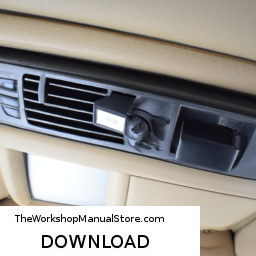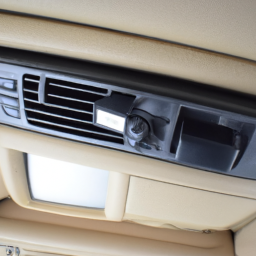
Performing a wheel alignment on a Mercedes Benz S Class S450 L W221 requires careful attention to detail, specialized tools, and adherence to specific procedures. Access and review the manual details here…..
- Service Tip: Use a Trickle Charger for Your Battery If you have or have not heard of trickle chargers, Mike, one of our factory-trained technicians, walks us through trickle chargers …
- Radiator Replacement Mercedes S550 I am replacing the radiator in this Mercedes S550. I show you step by step all that you need to do. #mercedes …
Here’s a comprehensive step-by-step guide with detailed descriptions of the tools needed for the process:
– **Safety Precautions**
– Ensure the vehicle is parked on a level surface.
– Engage the parking brake to prevent movement.
– Use wheel chocks on the rear wheels to further secure the vehicle.
– **Tools Required**
– **Alignment Rack**: A specialized platform that allows for precise measurements of wheel angles.
– **Alignment Heads**: Devices that attach to the wheel hubs and measure angles during the alignment process.
– **Laser Alignment Tools**: For enhanced precision, these tools project laser beams to help ensure accurate adjustments.
– **Camber and Caster Gauge**: measures the camber and caster angles of the wheels.
– **Toe Plates**: Used to measure toe angle, providing a basis for adjustment.
– **Torque Wrench**: Ensures that bolts and nuts are tightened to the manufacturer’s specifications.
– **Basic Hand Tools**: Including sockets and wrenches for loosening and tightening suspension components.
– **Bubble Level**: For checking the level of the vehicle during the process.
– **Initial Inspection**
– Examine the tires for uneven wear, which can indicate alignment issues.
– check suspension components for wear or damage, including bushings, ball joints, and tie rods.
– Look for any signs of leaks in the steering system.
– **Set Up the Alignment Rack**
– Position the vehicle on the alignment rack, ensuring it is centered and straight.
– Adjust the rack if necessary to ensure it is level.
– **Attach Alignment Heads**
– Securely attach the alignment heads to each wheel hub.
– Ensure that the heads are properly calibrated and aligned with the vehicle’s centerline.
– **Measure Initial Angles**
– Use the alignment equipment to measure camber, caster, and toe angles.
– Record the readings for comparison after adjustments.
– **Adjust Camber**
– If the camber angle is outside of specifications, locate the camber adjustment bolts or eccentric washers on the strut or control arm.
– Loosen the bolts and adjust the angle as necessary, then retighten the bolts to the specified torque.
– **Adjust Caster**
– Caster adjustments typically require moving the upper control arm or strut assembly. Refer to the vehicle’s service manual for the exact procedure.
– Use the torque wrench to tighten bolts to the specified settings after making adjustments.
– **Adjust Toe**
– Adjust the tie rods to set the toe angle. This is typically done by loosening the lock nuts and turning the tie rod ends.
– Measure toe angle again and ensure it matches the manufacturer’s specifications.
– **Recheck Measurements**
– After all adjustments, recheck the camber, caster, and toe angles to ensure they are within the specified range.
and toe angles to ensure they are within the specified range.
– Make any necessary adjustments based on these readings.
– **Final Inspection**
– check all bolts and nuts for proper torque.
– Inspect the alignment equipment for correct positioning and calibration.
– **Test Drive**
– Perform a test drive to ensure that the vehicle handles correctly and that there are no unusual noises or vibrations.
– Monitor the steering wheel for straightness and stability at various speeds.
– **Documentation**
– Record the before and after alignment specifications for reference.
– Provide the customer with a report detailing the work done and any recommendations for future maintenance.
Following this detailed guide will help you successfully perform a wheel alignment on a Mercedes Benz S Class S450 L W221, ensuring optimal handling and tire longevity.
A spare tire is an essential component of a vehicle’s equipment, designed to provide a temporary solution in the event of a flat tire. Typically found in the trunk or under the vehicle, a spare tire serves as a backup to ensure that drivers can continue their journey after experiencing a tire puncture or blowout.
Spare tires come in various types, including full-size spares, which are identical to the regular tires on the vehicle, and compact or “donut” spares, which are smaller and lighter but have limitations in terms of speed and distance. Full-size spares offer the advantage of maintaining the same handling characteristics as the original tires, allowing for normal driving conditions. In contrast, compact spares are designed for temporary use and are typically not meant for long distances or high speeds, usually restricted to a maximum speed of 50 mph.
The importance of a spare tire cannot be overstated; it provides peace of mind and safety for drivers, allowing them to address tire issues without being stranded. It is crucial for vehicle owners to regularly check the condition and pressure of their spare tire, as it can deteriorate over time even if it remains unused. Additionally, knowing how to properly access and install the spare tire is vital, as this knowledge can significantly reduce the inconvenience and potential hazards associated with tire failure on the road.